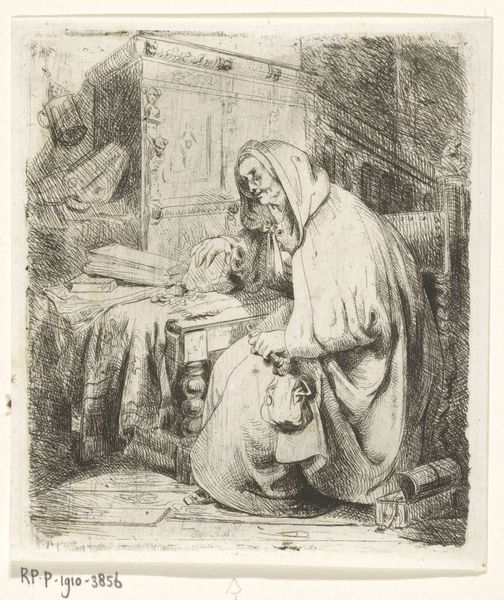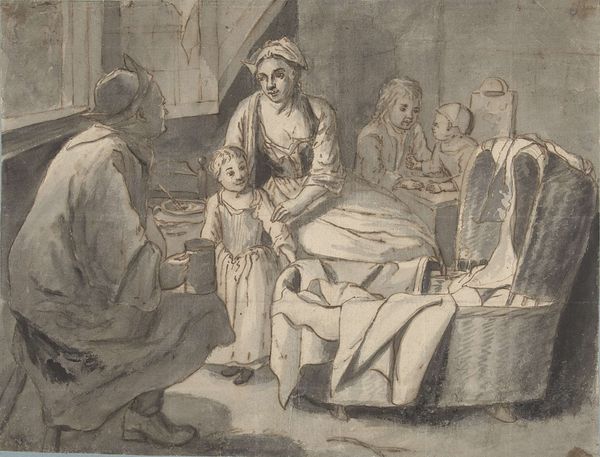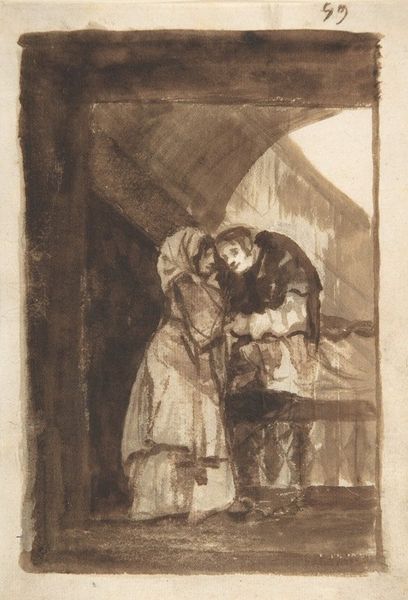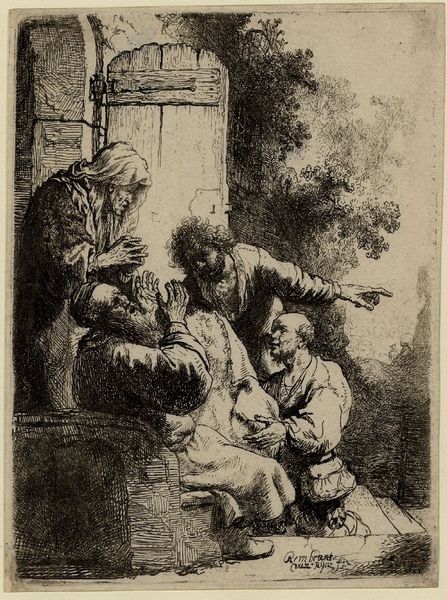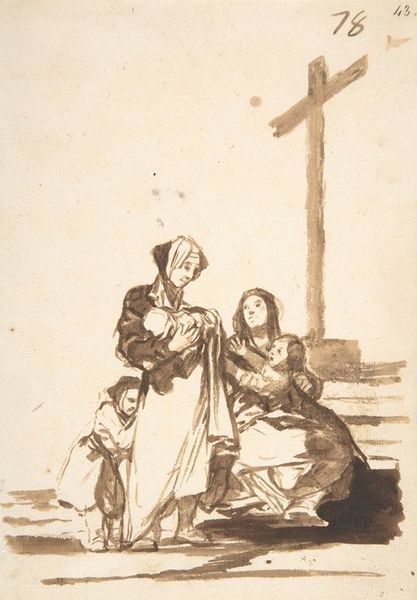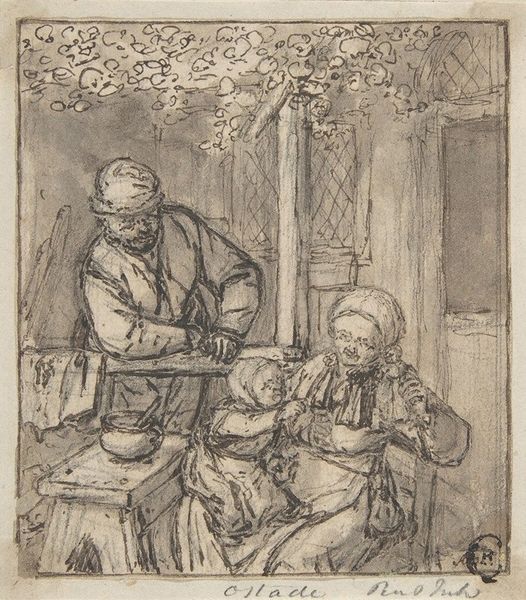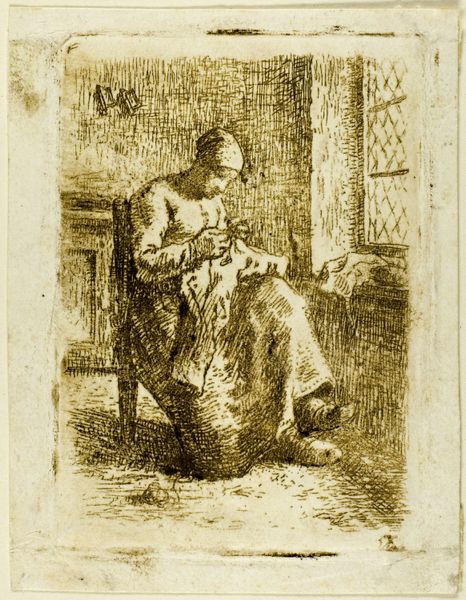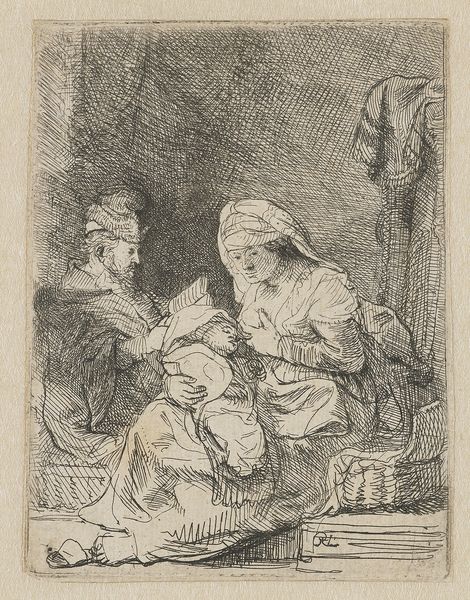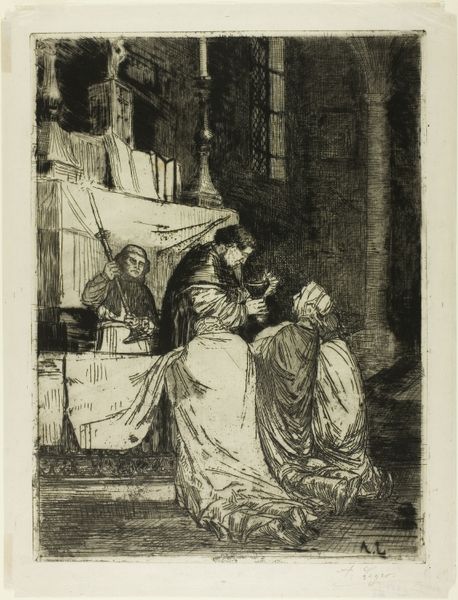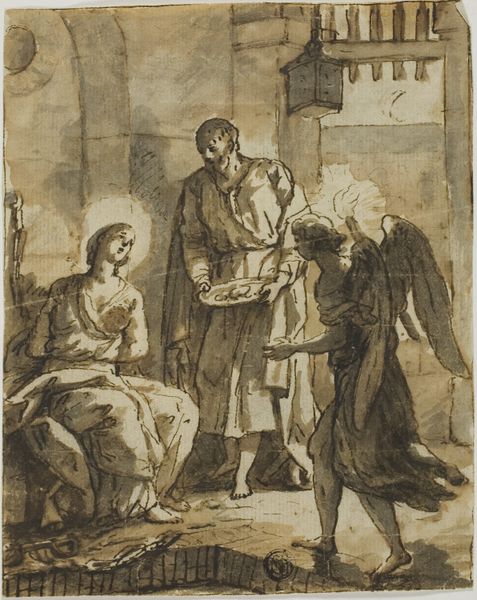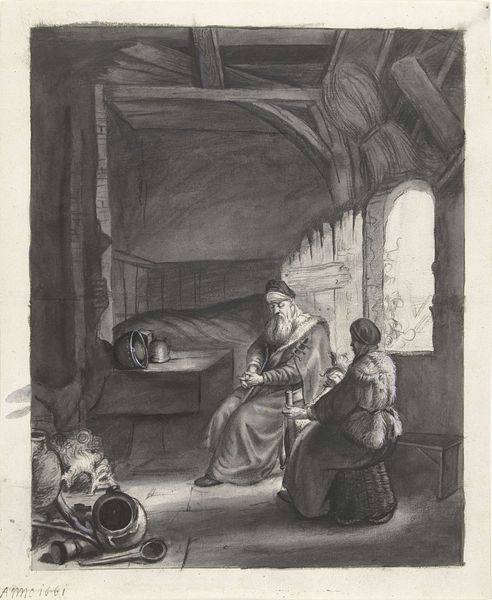
drawing, charcoal
#
portrait
#
drawing
#
pencil sketch
#
charcoal drawing
#
figuration
#
pencil drawing
#
romanticism
#
portrait drawing
#
charcoal
Copyright: Public Domain: Artvee
Curator: It's impossible to miss the raw emotion in Goya's charcoal and pencil drawing, dating from around 1812 to 1820, entitled "A woman kneeling, her arms wide, before an old man." The stark contrast immediately sets a tone, doesn’t it? Editor: It does. The composition is dominated by strong verticals and diagonals; the lines around the kneeling woman and the sharp angles of the setting give it this very urgent, almost claustrophobic feel. Curator: Absolutely. The kneeling woman, arms outstretched, suggests supplication or desperate pleading, an archetypal posture of vulnerability, evoking Eve imploring Adam or a penitent before a patriarch, while the old man is… ambivalent, almost unwilling, shrouded in white, maybe representing purity. Editor: Ambivalence is key, isn’t it? Goya masterfully uses chiaroscuro. Notice the dark masses behind them contrasting with the relative brightness of the figures in the foreground? It concentrates our attention and heightens the drama, almost stage-like. The use of pencil alongside charcoal creates these soft, ghostly contrasts... Curator: Precisely. Those shadowed areas almost threaten to engulf her. Think about it— Goya was deeply concerned with power dynamics. This sketch could represent generational tensions, religious anxieties, maybe even political instability reflecting Spain’s tumultuous era and his loss of faith. There is even something almost theatrical here: Goya explored these themes on stage through designs as well as art. Editor: It's remarkable how much he conveys with such limited means, stripping away superfluous details. One is left only with the core structural relationships and an overwhelming sense of contained anguish. And if we look closely at how the forms interact – see where his strokes stop? – these gaps force the eye to complete those connections, the emotional incompleteness. Curator: It speaks volumes. Goya always possessed this talent for creating emotionally loaded compositions and that transcends time. It is both of its time, yet always speaks to the heart. Editor: Indeed. Its graphic nature, while very Romantic in its feeling, remains striking in its compositional strength and sparseness.
Comments
No comments
Be the first to comment and join the conversation on the ultimate creative platform.
